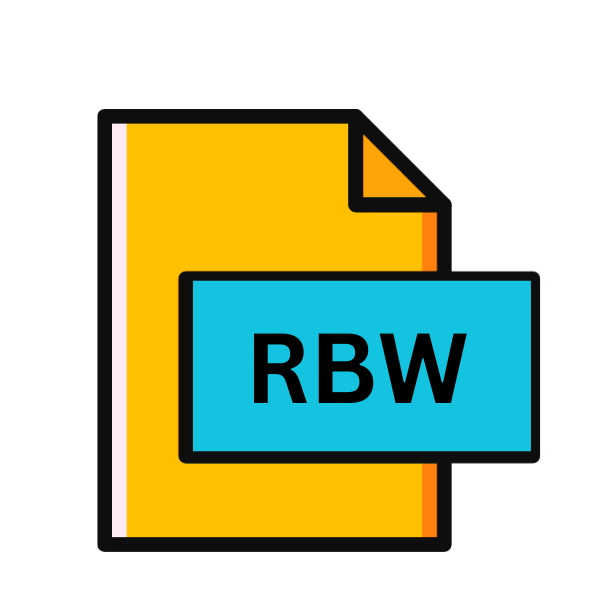.RBW File Extension

Ruby Script
| Developer | N/A |
| Popularity | |
| Category | Developer Files |
| Format | .RBW |
| Cross Platform | Update Soon |
What is an RBW file?
In the realm of programming languages, Ruby has established itself as a versatile and powerful tool for developers. Among the plethora of files associated with Ruby, the .RBW file extension stands out.
These files, often referred to as Ruby Script files, contain code written in the Ruby programming language. They play a crucial role in the development of applications, scripts, and software solutions across various platforms.
More Information.
The history of .RBW files can be traced back to the early days of Ruby development. Initially, Ruby scripts were saved with the .rb extension, which is still widely used today. However, as the complexity of Ruby projects increased, developers sought a way to encapsulate entire Ruby applications, including their dependencies and configurations, into a single file. Thus, the .RBW extension was born.
The primary purpose of .RBW files provide a convenient packaging mechanism for Ruby scripts. By bundling all necessary components into a single file, developers can easily distribute and deploy Ruby applications without worrying about missing dependencies or compatibility issues.
Origin Of This File.
The .RBW file extension is closely associated with the Ruby programming language, which was created in the mid-1990s by Yukihiro Matsumoto, a Japanese computer scientist. Ruby was designed to be simple and intuitive, with a focus on productivity and enjoyment for programmers.
As the popularity of Ruby grew, so did the need for a standardized format to save Ruby scripts, leading to the emergence of the .RBW file extension.
File Structure Technical Specification.
.RBW files follow a specific structure that allows them to encapsulate Ruby scripts along with any associated resources, such as libraries, data files, and configuration settings.
While the exact specifications may vary depending on the tools used to create and manipulate .RBW files, they typically consist of the following components:
- Ruby Code: The core of the .RBW file contains the actual Ruby code that defines the behavior of the application or script.
- Dependencies: .RBW files may include references to external libraries or gems required for the application to function properly. These dependencies are typically bundled alongside the main Ruby code.
- Configuration Settings: Some .RBW files may include configuration settings or metadata that specify how the application should be executed or configured.
- Resources: In addition to code and dependencies, .RBW files may also contain other resources such as images, data files, or documentation.
How to Convert the File?
Converting .RBW files to other formats or vice versa may not always be straightforward due to the unique nature of .RBW files. Depending on the specific requirements and tools available, the following methods can be used to convert .RBW files:
- Convert to .RB Format: Since .RBW files are essentially Ruby scripts with additional packaging, converting them to the standard .rb format involves extracting the Ruby code and separating it from any bundled dependencies or resources. This can typically be done manually by opening the .RBW file in a text editor and copying the Ruby code into a new file with the .rb extension.
- Extracting Dependencies: If the .RBW file contains dependencies or resources that need to be extracted, various tools and scripts are available to automate this process. For example, tools like Bundler can be used to analyze the .RBW file and extract any required gems or libraries into a separate directory.
- Repackaging: Conversely, if you have a collection of Ruby scripts and resources that you want to package into a .RBW file, you can use packaging tools or scripts to bundle everything together. One common approach is to use a tool like Tar or Zip to create a compressed archive containing all the necessary files, which can then be renamed with the .RBW extension.
- Conversion Tools: While dedicated conversion tools for .RBW files may not be widely available, general-purpose file conversion tools or scripting languages like Python can be used to automate the conversion process. These tools typically involve parsing the contents of the .RBW file and transform them into the desired format, whether it be .rb files, a different packaging format, or another programming language altogether.
- Manual Extraction and Repackaging: In some cases, manual extraction and repackaging may be the most straightforward option. This involves manually extracting the contents of the .RBW file using a file archiving tool like 7-Zip or WinRAR, making any necessary modifications to the files, and then repackaging them into a new .RBW file.
Advantages And Disadvantages.
Advantage:
- Portability: .RBW files encapsulate all necessary components of a Ruby application, making them highly portable across different platforms and environments.
- Ease of Distribution: By bundling everything into a single file, .RBW files simplify the distribution and deployment of Ruby applications.
- Version Control: .RBW files can be easily managed and versioned using standard version control systems like Git, enabling collaborative development and tracking of changes over time.
Disadvantage:
- Increased File Size: Packaging all dependencies and resources into a single file can result in larger file sizes compared to traditional Ruby scripts, which may impact performance and storage requirements.
- Limited Compatibility: Not all Ruby tools and environments support .RBW files out of the box, which may limit their usability in certain scenarios.
- Complexity: Managing and manipulating .RBW files can be more complex compared to traditional Ruby scripts, especially when dealing with dependencies and configurations.
How to Open RBW?
Open In Windows
- Use a text editor like Notepad++ or Sublime Text to view and edit .RBW files.
- Install Ruby on Windows and execute .RBW files via the Command Prompt using the
ruby your_file.rbwcommand.
Open In Linux
- Use a text editor like Vim or Nano to view and edit .RBW files.
- Install Ruby on Linux and execute .RBW files via the terminal using the
ruby your_file.rbwcommand.
Open In MAC
- Use a text editor like TextEdit or Visual Studio Code to view and edit .RBW files.
- Install Ruby on macOS and execute .RBW files via the terminal using the
ruby your_file.rbwcommand.
Open In Android
- Use Termux, a terminal emulator for Android, to install Ruby and execute .RBW files.
- Navigate to the directory containing the .RBW file in Termux and run
ruby your_file.rbwto execute the script.
Open In IOS
- Use apps like Pythonista, which provides a Python environment on iOS, to run .RBW files.
Open in Others
- On cloud platforms, set up a Ruby environment and execute .RBW files.
- Utilize web-based IDEs that support Ruby to edit and run .RBW files directly in your browser.
- Use virtual machines or containers with Ruby support to run .RBW files on various platforms.













